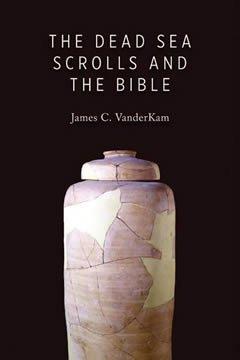The Dead Sea Scrolls and the Bible

Nobody ever expected to find the Dead Sea Scrolls, especially in the place that they were found; the climate isn’t right for preservation of ancient parchment and papyrus.
Yet, the amazing discovery is viewed as the greatest archaeological find in the 20th century and the one that has most greatly affected biblical studies. The scrolls predate any other Old Testament manuscripts by about 1,000 years. Scholars have pored over the more than 600 scrolls and thousands of fragments since they were first discovered 65 years ago.
One of those scholars, James VanderKam, John A. O’Brien Professor of Hebrew Scriptures at the University of Notre Dame, has spent much of his career translating and studying the scrolls. His latest book, The Dead Sea Scrolls and the Bible, explains the contribution of the scrolls to critical issues in the study of Jewish and Christian scriptures.
Originally presented as a series of lectures at Oxford University, the published version, like the lectures, offers detailed summaries of significant ways in which the scrolls can enrich the reading and study of the Bible.
While VanderKam’s first book on the scrolls, The Dead Sea Scrolls Today (Eerdmans, 1994 and updated 2010), is more of a general book on scrolls research, his new book has a narrower purpose: “These chapters are intended to contribute to the study of the Bible. They give a position upon which the majority of those who work on the scrolls agree.”
The chapters offer detailed examples of translations and help provide context to specific biblical passages. VanderKam’s comments include observations from Exodus, Isaiah and Psalms.
Generally, VanderKam writes of the scrolls, “… the copies furnish the oldest original language evidence for the many passages they represent, centuries older than any other witness … . Second, the manuscripts from the Judean wilderness provide evidence that scriptural texts were transmitted with considerable care by Jewish copyists. … Third, despite the more recent finds, only a very limited set of data has survived, and it yields a correspondingly limited perspective on the history and varieties of the scriptural texts.”
One of the most surprising things the scrolls do is provide additional information about the New Testament, VanderKam said. One of the book’s chapters is dedicated to these findings. The examples VanderKam shares allows “the reader to see events in the lives of Jesus and those around him in their context, but in a context now known more fully because of the scrolls,” he writes.
The scrolls also help clarify when certain books became recognized as the Bible. “The New Testament is an interesting source of information about that,” he said. “Jesus and Paul cite from the Old Testament; the books that they cite, everyone agrees on as authoritative.”
VanderKam believes his book will be accessible to seminary students, graduate students and well-informed clergy members, but also to people who wish to further understand the biblical texts and their contexts.
“I always have thought that academic study of the Bible enriches my own reading of the Bible,” VanderKam said. “I’ve had fun [doing this type of research] because it enlivens the reading of the scriptural text.”






